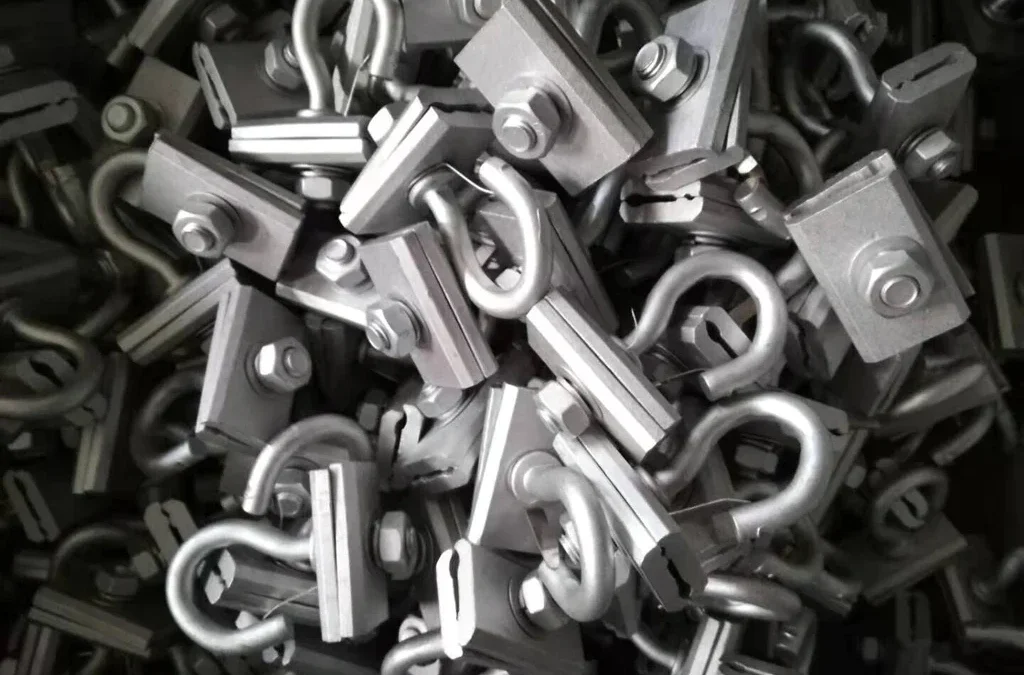Span clamp is also known as suspension clamp or mid-span clamp used on power lines to support and stabilize conductors between two suspension poles. It installs at intermediate points along the power line span to maintain proper tension and prevent excessive sagging of the conductor. It holds the conductor in place while allowing some degree of movement to accommodate thermal expansion and contraction. The span clamp distributes the weight of the conductor evenly on the power lines. they have a vital role in maintaining the structural integrity, tension and alignment of power line conductors.
Components of span clamps
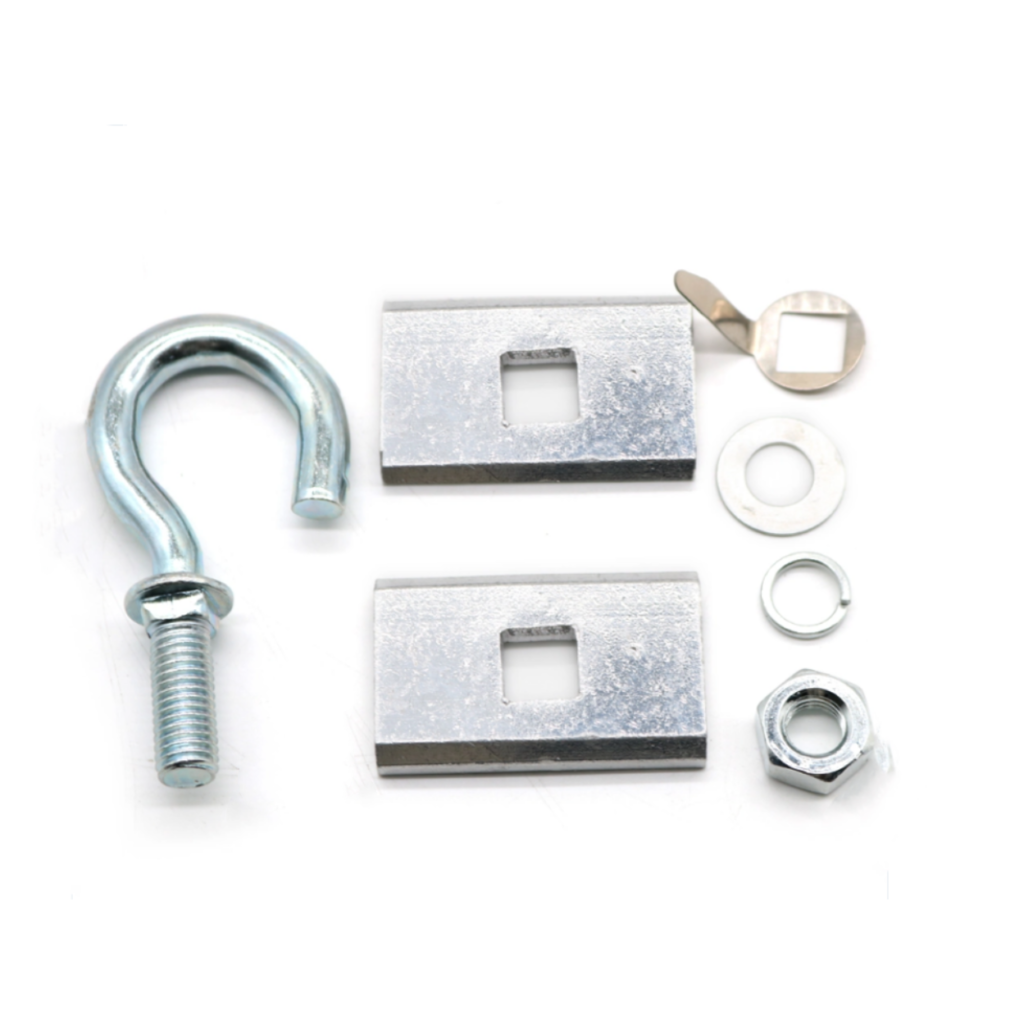
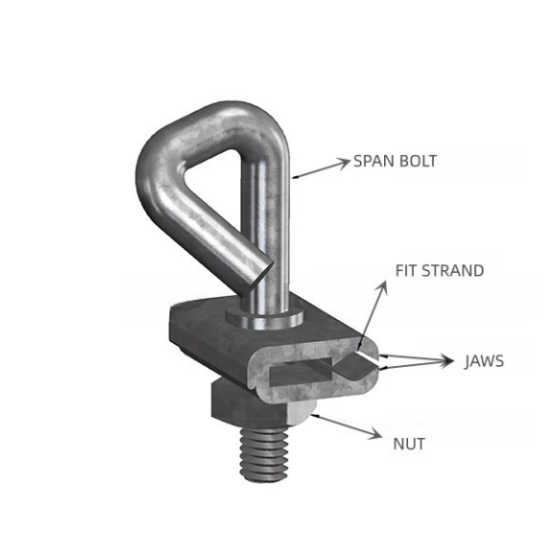
The design and configuration of the components vary among different span clamp models and manufacturers. It is also recommended to consult the specific product documentation or manufacturer’s guidelines for detailed information on the components. Discussed below are the major components of the span clamp.
- Clamp body – The body or frame of the span clamp provides the structural support and housing for the other components. It is made of durable materials to withstand environmental conditions.
- Gripping elements – Span clamps have gripping elements that securely hold the conductor in place. The elements include grooves, serrations or specially designed surfaces that provide grip without damaging the conductor.
- Fasteners – Span clamps utilize bolts and secure the conductor and maintain the grip. The fasteners include bolts, nuts and washers made from corrosion-resistant materials.
- Insulators – Insulators provide electrical insulation between the conductor and the clamp. They help prevent any electrical contact or arcing between the conductor and the clamp.
- Tensioning devices – Some span clamps incorporate tensioning devices or mechanisms to adjust the tension in the conductor.
- Attachment points – The devices have attachment points that allow for connection to the support structure like suspension points or holes. They enable the secure installation of the span clamp along the power line span.
- Accessories – Span clamps may include additional accessories like vibration dampers or protective covers depending on the specific design and requirements. They help mitigate vibrations, reduce wear and tear and protect the clamp and conductor from environmental factors.
Types of span clamps used on the power lines
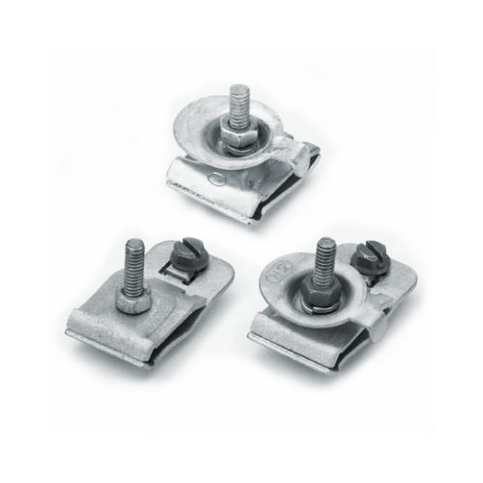
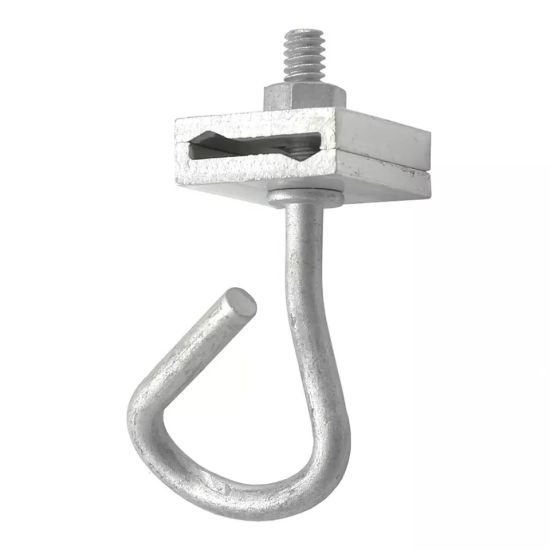
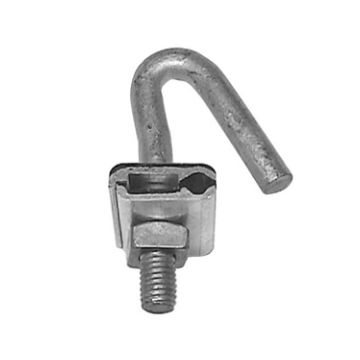
The types of span clamps depend on the regional standards, voltage levels and conductor types. Different power companies may choose their preferred types of clamps based on their specific requirements and regulations. The following are the main types of span clamps used on the power lines.
- Parallel groove clamps
These are used to connect two types of conductors in parallel and maintain proper spacing and electrical continuity between them. - Suspension clamps
Suspension clamps suspend conductors between support structures like poles or towers. They also provide vertical support and allow for some movement to accommodate thermal expansion and contraction. - Guy wire clamps
These are used to secure guy wires which provide additional support and stability to power structures. They work with guy wires to anchor and brace the structures. - Strain clamps
Strain clamps provide tension and strain relief for conductors at the termination points. They are used at the ends of a span where the conductor changes direction. - Armor rods
Armor rods are not technically a clamp but they are used with suspension clamps and strain clamps. They wrap around the conductor to prevent abrasion and damage from the clamp’s gripping action. - Dead end-clamps
These clamps terminate the conductor at the ends of a power line. They securely hold the conductor in place to provide mechanical and electrical continuity.
Application of span clamps
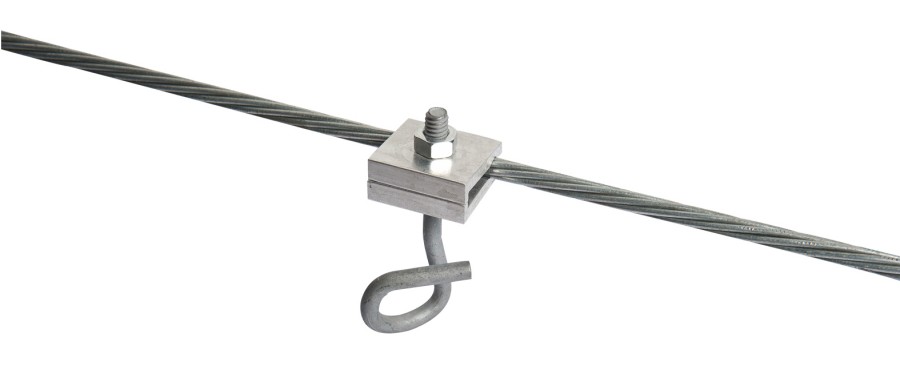
Span clamps have a crucial role in maintaining the structural integrity, tension, and alignment of power line conductors. This is through distributing the weight of the conductor and preventing excessive sagging. The clamps also contribute to the overall reliability and performance of the power transmission and distribution system. The following are the common applications of the span clamps.
- Overhead transmission lines
Span clamps support the conductors between suspension points or towers and help maintain the proper tension, prevent excessive sagging and ensure reliable power transmission over long distances. - Distribution lines
Distribution lines support and stabilize the conductors between poles and maintain proper clearance and prevent unnecessary strain on the conductors. - Fiber optic cables and communication lines
These clamps are used in communication lines installations like fiber optic cables and telephone lines. They also provide support and stability for these communication cables ensuring the uninterrupted transmission of signals. - Railway electrification
Span clamps work in railway electrification projects to support and stabilize overhead contact wires. They help maintain the desired tension and alignment of the wires which ensures reliable power supply to electric trains.
Installation of the span clamp
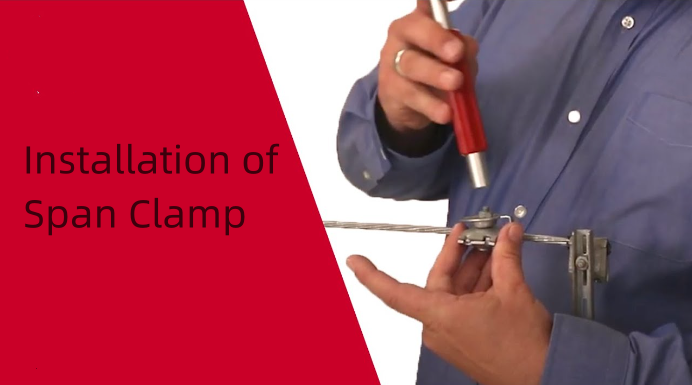
Many of the manufacturers in the market provide detailed guidelines on how to use the devices. You may also consult with professional electricians and engineers on how to go about the installation process and what devices to use. Below are the steps followed when installing a span clamp on power lines.
- Site assessment
Evaluate the power line span and identify the appropriate locations for installing the span clamp. You should also consider the length of the span, conductor type and size and the desired tension and sag parameters. - Preparing the conductor
Make sure the conductor is clean and free from contaminants that may affect the grip of the span. - Span clamp positioning
Install the span clamps at the desired location along the power lines where the spacing depends on the conductor type, size and sag requirements. - Aligning the conductor
This is positioning the conductor within the gripping elements of the span clamp. Ensure that the conductor is centered and aligned properly for optimal grip and performance. - Securing the clamp
Secure the span clamp by tightening the bolts or fasteners provided to ensure a secure and reliable connection. - Inspection and testing
Visually inspect the clamps to ensure they are securely fastened, aligned correctly and free from defects. Conduct performance tests to ensure the clamps are functioning as intended.
Choosing the best span clamp for power lines
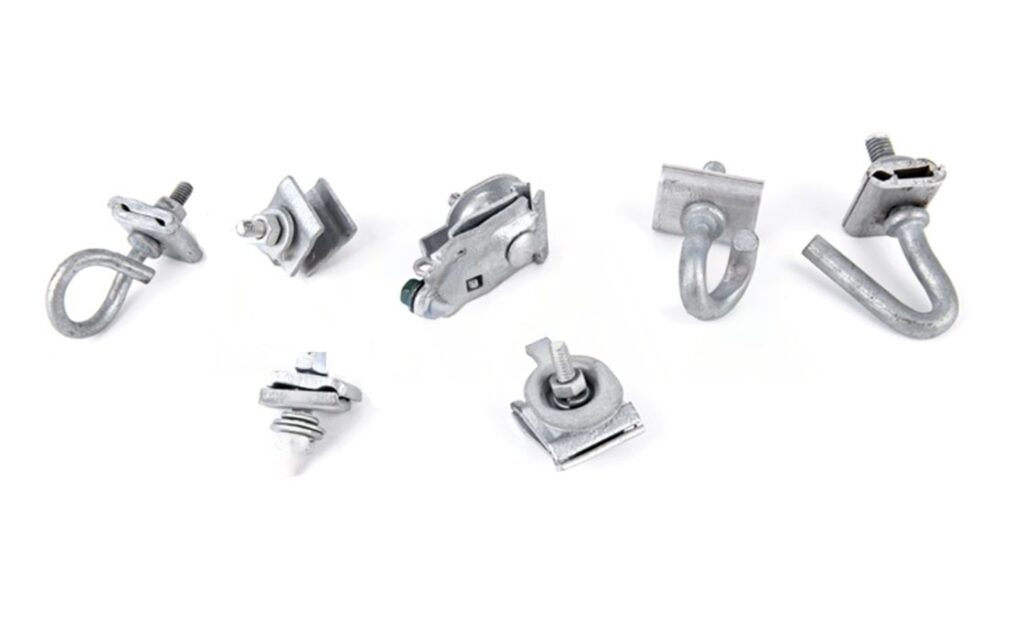
There are various types of clamps and different manufacturers in the market which can make it hard to know the best clamp to use. The selection of the best span clamps involves a series of factors to consider before purchase. Below are the factors to consider when selecting a spa clamp for power line projects.
- Assess the specific needs of a power line project like voltage level, conductor types and the function of the clamp.
- Ensure that the span clamp is compatible with the conductor size and shape. It is designed to securely hold and support the conductor without causing damage.
- Assess the load capacity of the span clamp to ensure it can handle the expected mechanical loads.
- Consider the electrical conductivity requirements to provide good continuity and minimize resistance.
- Evaluate the environmental conditions like humidity, salt spray or chemical exposure and select a clamp with resistance.
- Check the local regulations and industry standards for power line construction and maintenance.
- Consider the reputation and record of the manufacturer for high-quality and reliable span clamps.
- Consult with power line engineers if you are unsure about the best clamp for your installation.
FAQ
Span clamps are devices used on the power lines to support and stabilize conductors between two suspension poles.
Strain clamps
Dead end-clamps
Guy wire clamps
Suspension clamps
Armor rods
Parallel groove clamps
Secure conductor support
Flexibility and movement
Ease of installation
Good electrical continuity
Corrosion resistance
Safety of power lines
They have increased complexity in construction and maintenance
Increased costs for the power line projects
Potential for corrosion over time
Require frequent inspection and maintenance
Compatibility and interoperability
Limited adjustment range
Environmental implications

